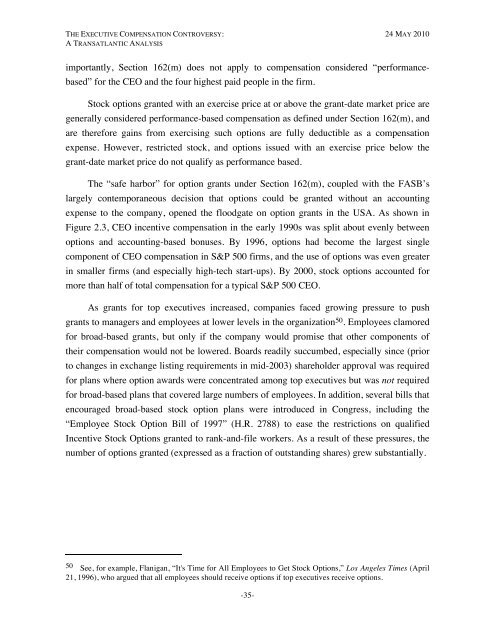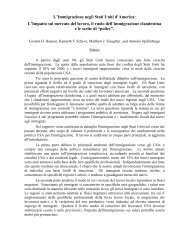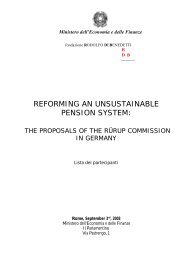The Executive Compensation Controversy - Fondazione Rodolfo ...
The Executive Compensation Controversy - Fondazione Rodolfo ...
The Executive Compensation Controversy - Fondazione Rodolfo ...
You also want an ePaper? Increase the reach of your titles
YUMPU automatically turns print PDFs into web optimized ePapers that Google loves.
THE EXECUTIVE COMPENSATION CONTROVERSY: 24 MAY 2010A TRANSATLANTIC ANALYSISimportantly, Section 162(m) does not apply to compensation considered “performancebased”for the CEO and the four highest paid people in the firm.Stock options granted with an exercise price at or above the grant-date market price aregenerally considered performance-based compensation as defined under Section 162(m), andare therefore gains from exercising such options are fully deductible as a compensationexpense. However, restricted stock, and options issued with an exercise price below thegrant-date market price do not qualify as performance based.<strong>The</strong> “safe harbor” for option grants under Section 162(m), coupled with the FASB’slargely contemporaneous decision that options could be granted without an accountingexpense to the company, opened the floodgate on option grants in the USA. As shown inFigure 2.3, CEO incentive compensation in the early 1990s was split about evenly betweenoptions and accounting-based bonuses. By 1996, options had become the largest singlecomponent of CEO compensation in S&P 500 firms, and the use of options was even greaterin smaller firms (and especially high-tech start-ups). By 2000, stock options accounted formore than half of total compensation for a typical S&P 500 CEO.As grants for top executives increased, companies faced growing pressure to pushgrants to managers and employees at lower levels in the organization 50 . Employees clamoredfor broad-based grants, but only if the company would promise that other components oftheir compensation would not be lowered. Boards readily succumbed, especially since (priorto changes in exchange listing requirements in mid-2003) shareholder approval was requiredfor plans where option awards were concentrated among top executives but was not requiredfor broad-based plans that covered large numbers of employees. In addition, several bills thatencouraged broad-based stock option plans were introduced in Congress, including the“Employee Stock Option Bill of 1997” (H.R. 2788) to ease the restrictions on qualifiedIncentive Stock Options granted to rank-and-file workers. As a result of these pressures, thenumber of options granted (expressed as a fraction of outstanding shares) grew substantially.50 See, for example, Flanigan, “It's Time for All Employees to Get Stock Options,” Los Angeles Times (April21, 1996), who argued that all employees should receive options if top executives receive options.-35-









